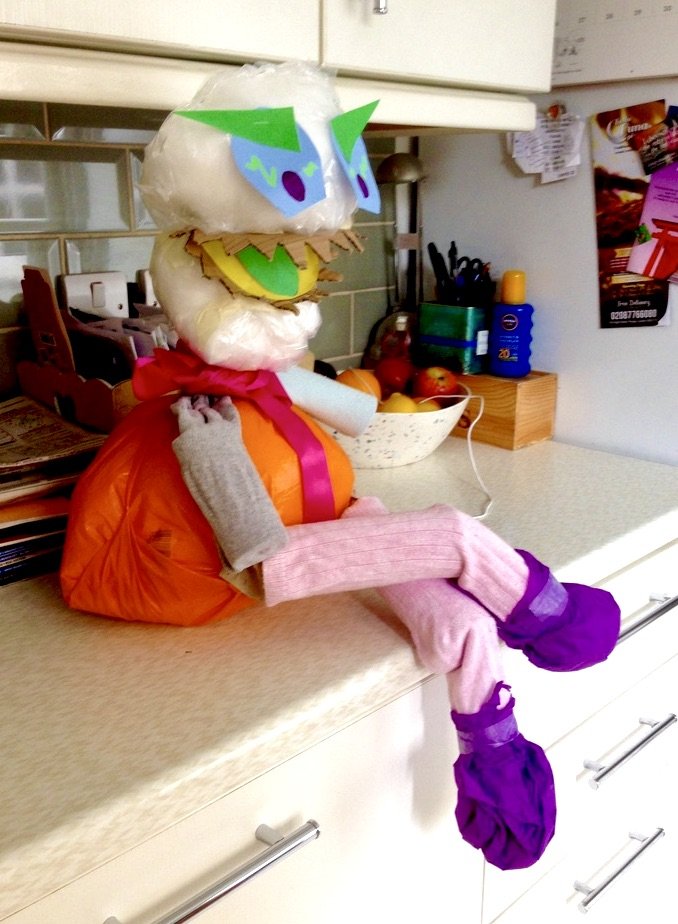My year out from university in 2020-21 was a period of intense reflection, spent looking back at the previous year’s studies and working out how to develop my work into the third, and final, year. Covid had a huge effect on my practice – firstly, with the enforced lockdowns; and secondly, catching Covid early on in the pandemic and enduring Long Covid for another 18 months. Being ill and confined to home with restricted access to materials, libraries and places to visit, meant I had to radically re-evaluate my art practice, both mentally and physically.
Restrictions and safe havens, for child and adult
It was also a period of reflection on life in general and I couldn’t help comparing my situation to when I was a child of around 7-8 years: restricted to the small world of the home and local neighbourhood, under the control of family, and becoming increasingly aware of the huge, scary unknown place that was the outer world. Looking back, I was always frustrated by my lack of voice and inability to articulate how I felt about the world. I was creative but this, too, was restricted: I didn’t have money or access to art materials other than cheap crayons, felt pens and, occasionally, my father’s precious coloured pencil set that I was rarely allowed to use. But I was lucky in having a grandmother who was interested in arts and crafts - we would spend every Thursday afternoon watching Blue Peter and the weekends making the show’s projects - and it was her use of household detritus such as cardboard boxes, DIY equipment and gardening materials to make her creations that inspires me today.
Penelope Puppet, the first Covid lockdown project made using household detritus. Photo Shirley A
The context of my practice lies in reflections of awkward, uncomfortable scenarios: a family gathering that goes horribly wrong, cruel taunts in the school playground, petty jealousies and perceived slights – picking up on the theory of RD Laing, who believed that family and close friends were major contributors to children being diagnosed as schizophrenic.1 As a child, I coped with such traumas by immersing myself in imaginary worlds influenced by the culture I consumed – books, television, cinema and pop music. I built dens with available materials – cardboard boxes, newspapers, old clothes and curtains. Fun and hugely satisfying to make, my dens also had a deeper underlying context, for it was in these spaces that I would replay awkward scenarios from real life. These dens and my role-plays allowed me to contemplate and assert my place in society, and thus achieve a sense of control, empowerment and independence.
The imaginary games would often take place in a secret den that I had created based on a tropical island or overgrown fantasy garden. As an adult, the garden is important for me as a place to think, create and nurture, and as such is a safe haven, particularly so during the Covid lockdowns. Plants play a huge part in a garden but, more than anything, by incorporating them into my project it becomes, as Piet Oudolf describes: “… about emotion, atmosphere, a sense of contemplation… to move people with what I do. You look at this, and it goes deeper than what you see.”2
Piet Oudolf “plants like an artist paints”3: At Hauser & Wirth, Somerset, the Oudolf Field in bloom provides broad brush strokes of colour from a palette of perennials and grasses that merge the landscape with the artworks inside the gallery. Photo Magnus Dennis/Urquhart & Hunt
As I planted, deadheaded, weeded and pruned, I tried to make sense of this new world and put anxieties into perspective. In doing so, a future presented itself. I also spent a lot of time reading and as my online book-buying increased during this time, I accumulated a small mountain of the cardboard mailer envelopes that my online purchases came in. These beige-coloured packs and their malleability caught my imagination. The slower pace of life combined with my reading, gardening and gentle art-making spawned an idea for my final year project.
RD Laing and Aaron Esterson, Sanity, Madness and the Family. [Harmondsworth: Penguin, 1970].
Piet Oudolf in Five Seasons: The Gardens of Piet Oudolf, directed by Thomas Piper (Five Seasons Media LLC, 2022).
Noel Kingsbury in Five Seasons: The Gardens of Piet Oudolf, directed by Thomas Piper (Five Seasons Media LLC, 2022).
The first pop-up of the first lockdown sketchbook (background) based on my dissertation topic of afternoon tea. Photo Shirley A


